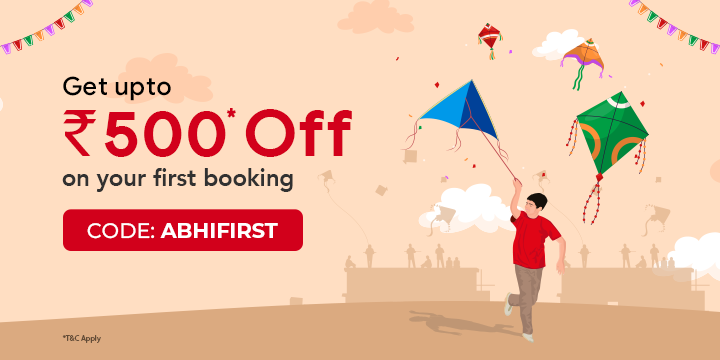Table of Contents
ToggleKasba Ganpati Mandir
Pune, the cultural capital of Maharashtra, is home to numerous temples that reflect the rich heritage and spiritual essence of the city. Among these sacred sites, the Kasba Ganpati Mandir holds a special place in the hearts of the locals and visitors alike. This blog aims to provide a comprehensive guide to the Kasba Ganpati Mandir, covering its history, significance, architecture, festivals, and practical information for visitors.
Also Read: Shreemant Dagadusheth Halwai Ganapati Pune
Introduction to Kasba Ganpati Mandir
Kasba Ganpati Mandir, dedicated to Lord Ganesha, is one of the oldest and most revered temples in Pune. It is situated in the Kasba Peth area, making it easily accessible for devotees and tourists. The temple is known for its grand celebrations during the Ganesh Chaturthi festival and attracts thousands of visitors each year.
Historical Background
- Establishment: The temple was established in the year 1630, making it one of the oldest Ganesha temples in Pune.
- Legend: According to local legends, the temple was built by the local residents after the idol of Lord Ganesha was found in the Kasba area.
- Importance: Kasba Ganpati is regarded as the “Gram Daivat” (village deity) of Pune, which means that the deity is considered the protector of the city.
Architectural Features
Kasba Ganpati Mandir showcases a blend of traditional Maharashtrian architecture and intricate carvings. The temple is an architectural marvel that reflects the artistic skills of ancient artisans.
Key Architectural Elements
- Garbha Griha: The sanctum sanctorum houses a majestic idol of Lord Ganesha, adorned with gold and precious jewels.
- Entrance: The temple has a grand entrance with beautifully carved wooden doors, which are a sight to behold.
- Pillars and Ceilings: The temple is supported by intricately designed pillars, with detailed carvings depicting various motifs and symbols associated with Hinduism.
- Courtyard: The spacious courtyard allows devotees to gather and participate in rituals and celebrations.
Significance of Kasba Ganpati Mandir
The Kasba Ganpati Mandir holds immense religious significance for the people of Pune and beyond.
Spiritual Importance
- Devotion: The temple is a place of worship where devotees come to seek blessings from Lord Ganesha for wisdom, prosperity, and good fortune.
- Cultural Hub: It serves as a cultural hub during festivals, where various traditional activities and rituals are performed.
Community Engagement
- Charitable Initiatives: The temple actively participates in charitable activities, such as feeding the underprivileged and organizing health camps.
- Festivals and Celebrations: The temple plays a vital role in organizing cultural events, promoting unity and togetherness within the community.
Festivals Celebrated at Kasba Ganpati Mandir
The Kasba Ganpati Mandir is most famous for its vibrant celebrations during the Ganesh Chaturthi festival. The temple attracts large crowds during this period, making it a focal point of festivity in Pune.
Ganesh Chaturthi
- Duration: The festival lasts for 10 days, during which the idol of Lord Ganesha is installed in the temple.
- Rituals: Daily aartis (prayer ceremonies) are conducted, and devotees offer flowers, sweets, and other offerings to the deity.
- Visarjan: On the last day, a grand procession takes place where the idol is taken to the river for immersion, marking the end of the festivities.
Other Festivals
- Diwali: The temple also sees a significant influx of devotees during Diwali, as people come to seek blessings for prosperity and happiness.
- Makar Sankranti: Celebrated with traditional sweets and rituals, this festival draws many visitors to the temple.
How to Reach Kasba Ganpati Mandir
The Kasba Ganpati Mandir is located in the heart of Pune, making it easily accessible by various modes of transportation.
By Public Transport
- Buses: Pune Mahanagar Parivahan Mahamandal Limited (PMPML) buses frequently operate in and around the area.
- Rickshaws: Auto-rickshaws are a convenient option for local travel, with drivers familiar with the temple’s location.
You can easily book Pune bus tickets on AbhiBus and travel hassle-free. Here are some of the most travelled bus routes by people to reach Pune.
By Car
- Parking: Limited parking is available near the temple. Visitors are advised to use public transport if possible, as the area can get crowded during festivals.
Nearby Landmarks
- Shaniwar Wada: A historical fort nearby, which can be visited in conjunction with the temple.
- Tulshi Baug: A bustling market area known for shopping, located close to the temple.
Visiting Hours
The Kasba Ganpati Mandir is open to visitors throughout the week.
- Morning Hours: 6:00 AM to 12:00 PM
- Evening Hours: 4:00 PM to 10:00 PM
- Best Time to Visit: Early mornings and late evenings are ideal for a peaceful experience.
Tips for Visitors
- Dress Code: Visitors are advised to wear modest clothing while visiting the temple.
- Photography: Photography is generally not allowed inside the sanctum sanctorum. However, you can capture the beauty of the temple from the outside.
- Crowd Management: Visit during non-festival days to avoid crowds and enjoy a more serene experience.
- Local Cuisine: Explore nearby eateries for authentic Maharashtrian cuisine after your temple visit.
Conclusion
The Kasba Ganpati Mandir is more than just a religious site; it is a symbol of Pune’s rich cultural heritage and communal harmony. Whether you are a devotee seeking blessings or a tourist exploring Pune’s historical landmarks, a visit to this temple is a must. With its stunning architecture, vibrant festivals, and spiritual significance, the Kasba Ganpati Mandir offers an enriching experience that captures the essence of Pune.
Make sure to plan your visit to this iconic temple and immerse yourself in the spirituality and traditions that define this beautiful city.





